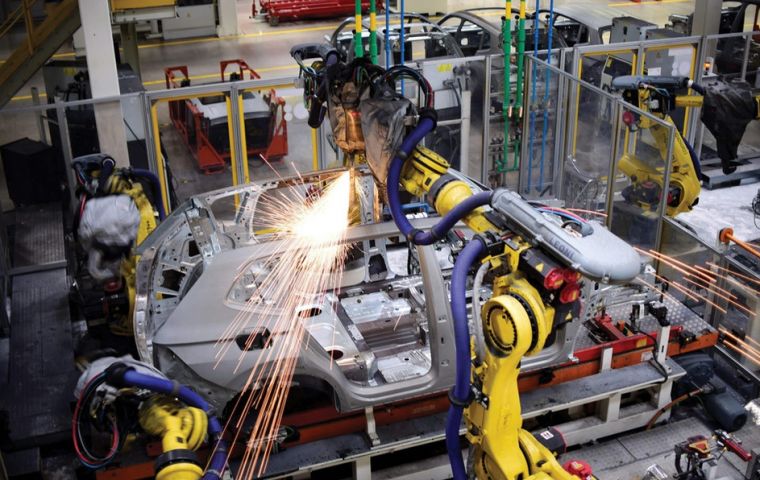MercoPress. South Atlantic News Agency
Brazil's vehicle manufacturing reports July 2023, has been the best sales month since July 2019
 With 225,600 licensed vehicles, this marked the most prolific July since 2019, effectively bouncing back to pre-pandemic levels
With 225,600 licensed vehicles, this marked the most prolific July since 2019, effectively bouncing back to pre-pandemic levels Brazil's National Association of Motor Vehicle Manufacturers’ (ANFAVEA) has reported that July is not only the best month for sales so far this year but also the best month for volume and daily registration averages since December 2020.
With 225,600 licensed vehicles, this marked the most prolific July since 2019, effectively bouncing back to pre-pandemic levels. A 19% increase was observed compared to the previous month, and a remarkable 24% increase compared to July 2022.
The impressive sales momentum, attaining a daily average of 10,743 units, played a pivotal role in whittling down the substantial inventories at factories and showrooms. Having surpassed 250,000 units at May’s closure, these inventories now sit below 200,000 units.
Due to the available inventory levels, July’s production didn’t mirror the accelerated sales pace. Despite factory shutdowns due to collective vacations, layoffs, and supply-demand adjustments, 183,000 vehicles rolled off the assembly lines, constituting a marginal 3.3% decline compared to the prior month.
Year-to-date figures reveal production hovering at 1.315 million units, nearly mirroring the output of the initial seven months of 2022, amounting to a 0.3% increase. Significantly, the domestic market is experiencing more substantial growth, with 1.224 million units sold, reflecting an impressive 11.3% uptick compared to the previous year.
However, the most notable downturn in 2023 is seen in exports, primarily attributed to internal complexities within crucial markets such as Colombia and Chile, among other South American nations. Argentina sustains 2022 trade levels with Brazil, but have already fallen short of the neighboring market’s potential. A noteworthy exception is Mexico, leading the Brazilian model export rankings for the first time in history with over 83,000 units, a staggering 90% surge over the previous year’s volume. Cumulatively, Brazil’s exports this year totaled 257.7 thousand units, reflecting a 10.6% decline from January to July 2022.
As to the machinery sector performance, it remains strong albeit slightly below last year’s impressive figures. Due to the drop in commodity prices, agricultural machinery sales were down 6.8%, and exports were down 5.2% by mid-year. On the other hand, road machinery fell 14.8% in the domestic market but increased by 9.4% in international markets.”




Top Comments
Disclaimer & comment rulesCommenting for this story is now closed.
If you have a Facebook account, become a fan and comment on our Facebook Page!